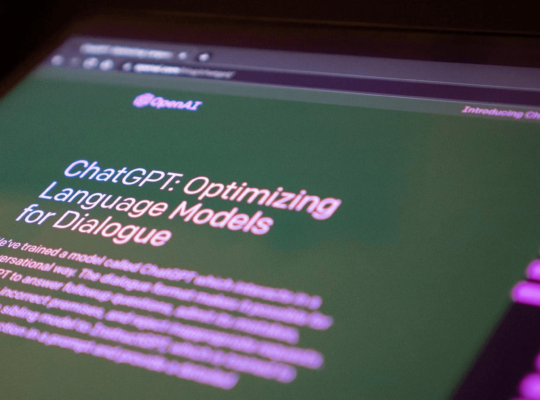Science is all around us, even in our everyday lives. From the food we eat to the way we communicate, science plays a vital role in our day-to-day activities. Understanding the basic principles of science can help us make better decisions, solve problems, and appreciate the world around us. This blogpost aims to provide an overview of everyday science, its applications, and its relevance to our lives.
Science is a fascinating subject that helps us understand the world we live in. However, it can be complex and difficult to understand for many people. This is why it is important to break down complex scientific concepts into simpler terms and explain their practical applications.
Applying scientific methods in everyday life, the first step is to identify the problem. This could be anything from figuring out which brand of product to buy to deciding the best way to budget our money. Once we have identified the problem, we need to gather data and information about the problem. This could involve conducting research, reading reviews, or seeking advice from experts.
The next step is to develop a hypothesis or possible explanation for the problem. This could involve considering different options and weighing their advantages and disadvantages. Once we have developed a hypothesis, we need to test it through experimentation. This could involve trying out different solutions and comparing the results to see which one works best.
Using the scientific method in everyday life can help us make better decisions and find the best solutions to problems. It can also help us avoid biases and assumptions that can lead to poor decision-making. By following a systematic approach, we can make informed decisions that are based on evidence and data.
Examples of everyday problems that can be solved with the scientific method include deciding which type of exercise routine is most effective, choosing the best diet plan, or determining the most efficient way to commute to work. These are all problems that can be approached using the scientific method to find the best solution.
Therefore, the scientific method is a powerful tool that can be used to solve everyday problems and make better decisions. By applying the scientific method in our daily lives, we can become more informed and effective problem-solvers. This chapter lays the groundwork for the rest of the booklet, which explores various scientific principles and their practical applications in our everyday lives.
Comes now the science of Nutrition. It is the science behind nutrition and its impact on our overall health and well-being. It covers topics such as macronutrients, micronutrients, and how to make informed decisions about the foods we eat.
Nutrition is the study of how the body uses nutrients in food to maintain health and well-being. Nutrients can be divided into two categories: macronutrients and micronutrients. Macronutrients are nutrients that are required in large amounts, including carbohydrates, fats, and proteins. Micronutrients are nutrients that are required in smaller amounts, including vitamins and minerals.
Carbohydrates are the body’s primary source of energy, and they are found in foods such as bread, pasta, and fruits. Fats are also a source of energy, and they are important for many bodily functions, including cell growth and hormone production. Proteins are essential for building and repairing tissues, and they can be found in foods such as meat, dairy, and legumes.
Micronutrients are essential for maintaining good health, and they can be found in a variety of foods. Vitamins are organic compounds that the body needs in small amounts to function properly. There are 13 essential vitamins, including vitamin A, vitamin C, and vitamin D. Minerals are inorganic compounds that are also essential for good health. Examples of minerals include calcium, iron, and potassium.
Eating a balanced diet that includes a variety of foods from all food groups is the best way to ensure that the body gets all the nutrients it needs. The US Department of Agriculture’s MyPlate provides a visual representation of a balanced diet, with fruits and vegetables making up half of the plate, and grains and proteins making up the other half. This approach can help people make informed decisions about the foods they eat and ensure that they are getting all the nutrients they need.
In addition to providing the body with essential nutrients, a healthy diet can also reduce the risk of chronic diseases such as heart disease, diabetes, and cancer. This is because a healthy diet can help control weight, lower cholesterol and blood pressure, and improve overall health.
Hence, nutrition is an important science that impacts our overall health and well-being. By understanding the basics of nutrition and making informed decisions about the foods we eat, we can ensure that our bodies get all the nutrients they need to function properly. This chapter provides an overview of the science of nutrition, and the following chapters will explore other scientific principles and their practical applications in our everyday lives.
Now, let’s explore what is behind the science of exercise. Just as nutrition is important for maintaining good health, exercise is also crucial for overall well-being. Regular exercise has many benefits for the body, including reducing the risk of chronic diseases such as heart disease, diabetes, and cancer. Exercise can also improve heart and lung function, increase muscle strength and endurance, and improve flexibility and balance. Moreover, exercise is also known to have a positive impact on mental health, reducing stress and anxiety and improving mood.
To get the most out of exercise, it is important to understand how it affects the body. During exercise, the body’s muscles require more oxygen and energy, which is supplied by the cardiovascular and respiratory systems. The heart pumps more blood to the muscles, and the lungs work to take in more oxygen and remove carbon dioxide.
There are several different types of exercise, including aerobic exercise, strength training, and flexibility exercises. Aerobic exercise, such as running, cycling, or swimming, is great for improving cardiovascular health and burning calories. Strength training, such as weightlifting, can help build muscle and improve bone density. Flexibility exercises, such as stretching or yoga, can improve range of motion and reduce the risk of injury.
The amount of exercise needed to maintain good health varies depending on individual factors such as age, fitness level, and overall health. The Centers for Disease Control and Prevention (CDC) recommends that adults engage in at least 150 minutes of moderate-intensity aerobic exercise per week, or 75 minutes of vigorous-intensity aerobic exercise per week. Additionally, adults should also engage in muscle-strengthening activities at least two days per week.
Therefore, the science of exercise is an important aspect of everyday science that impacts our overall health and well-being. Regular exercise has many benefits for the body, including reducing the risk of chronic diseases, improving physical fitness, and boosting mental health. By understanding the basics of exercise and making informed decisions about physical activity, we can ensure that our bodies get the exercise they need to function properly. The next chapter will explore another important aspect of everyday science.
Just like exercise and nutrition, sleep is an essential component of our overall health and well-being. In this chapter, we will explore the science behind sleep, its importance for our health, and how we can improve our sleep habits.
Sleep is a vital process that allows the body and brain to rest and repair. During sleep, the body’s cells are repaired, and the brain consolidates memories and learning. Lack of sleep can have a negative impact on physical and mental health, increasing the risk of chronic diseases such as obesity, diabetes, and depression.
There are several different stages of sleep, including non-REM sleep and REM sleep. Non-REM sleep is a deeper sleep that allows the body to repair itself, while REM sleep is the stage where dreaming occurs and the brain consolidates memories.
Getting enough sleep is essential for overall health and well-being. Adults should aim for 7–9 hours of sleep per night, while children and teenagers require more sleep. There are several strategies that can help improve sleep habits, including maintaining a consistent sleep schedule, creating a relaxing sleep environment, avoiding caffeine and alcohol, and avoiding electronics before bedtime.
In addition to these strategies, there are also several sleep disorders that can impact sleep quality, such as insomnia, sleep apnea, and restless leg syndrome. These conditions can be diagnosed and treated by medical professionals, and can greatly improve the quality of life for individuals who suffer from them.
So, the science of sleep is an essential component of everyday science that impacts our overall health and well-being. By understanding the basics of sleep and making informed decisions about sleep habits, we can ensure that our bodies get the rest they need to function properly. The next chapter will explore yet another important aspect of everyday science.
Just like exercise and sleep, stress is an integral part of our daily lives. In this chapter, we will explore the science behind stress, its impact on our physical and mental health, and ways to manage it.
Stress is a natural response to challenging situations, but when stress becomes chronic, it can have negative consequences on our health. Chronic stress can lead to high blood pressure, heart disease, and mental health problems such as anxiety and depression.
To understand the impact of stress, it is important to know the basics of the body’s stress response. The body’s response to stress involves the release of hormones such as cortisol and adrenaline, which prepare the body for “fight or flight” in response to a perceived threat. When stress becomes chronic, these hormones can have negative consequences on the body, including a weakened immune system and damage to organs such as the heart and brain.
There are several strategies that can help manage stress and reduce its negative impact on the body. These strategies include exercise, mindfulness practices such as meditation and yoga, and social support from friends and family. Additionally, making lifestyle changes such as reducing caffeine and alcohol consumption, getting enough sleep, and eating a healthy diet can also help reduce stress.
It is also important to recognize when stress has become chronic and seek help from a medical professional or mental health provider if necessary. There are several treatments available for chronic stress, including medication, therapy, and lifestyle changes.
In winding up, the science of stress is an important aspect of everyday science that impacts our overall health and well-being. By understanding the basics of stress and making informed decisions about stress management, we can reduce the negative impact of stress on our bodies and minds. The next chapter will explore yet another important aspect of everyday science.
Exploring now the science of addiction being a complex and challenging topic, with significant impacts on both individuals and society as a whole. We will be discussing the science behind addiction, its impact on health and social outcomes, and strategies for prevention and treatment.
Addiction is a chronic disease that involves the brain’s reward system. When a person engages in addictive behaviours such as drug use, gambling, or compulsive eating, the brain’s reward system is activated, leading to feelings of pleasure and reward. Over time, repeated engagement in these behaviours can lead to changes in the brain that can make it difficult to stop engaging in the behaviour, even when negative consequences are experienced.
Addiction can have significant negative impacts on physical and mental health, as well as social and economic outcomes. It can lead to a range of health problems such as heart disease, cancer, and mental health disorders such as anxiety and depression. It can also impact relationships, employment, and financial stability.
Prevention is an essential component of addressing addiction. Strategies for prevention include education and awareness campaigns, building resiliency skills, and addressing social and environmental factors that contribute to addiction.
Treatment for addiction involves a range of approaches, including medication, therapy, and support groups. Medication-assisted treatment can be effective for opioid addiction, while behavioural therapies such as cognitive-behavioural therapy and motivational interviewing can help address underlying issues and promote behaviour change. Support groups such as Alcoholics Anonymous can provide individuals with a sense of community and support during the recovery process.
So, the science of addiction is an essential component of everyday science that impacts individuals and society as a whole. By understanding the science behind addiction and making informed decisions about prevention and treatment, we can help reduce the negative impacts of addiction on our communities. The next chapter will explore yet another important aspect of everyday science.
The science of sustainability is also one of the important aspect of everyday science, as it relates to the long-term health and well-being of our planet and society. In this chapter, we will explore the science behind sustainability, its impact on the environment and society, and strategies for promoting sustainable practices.
Sustainability refers to the ability of a system to maintain its resources and functions over time. In the context of our planet, this means ensuring that our natural resources are used in a way that does not deplete them, and that our ecosystems are protected and maintained. It also means ensuring that social and economic systems are equitable and just, and that future generations have access to the resources they need to thrive.
There are several factors that impact sustainability, including climate change, pollution, habitat destruction, and overconsumption. Climate change is one of the most significant threats to sustainability, as it is causing changes to the earth’s ecosystems, weather patterns, and sea levels. Pollution and habitat destruction also contribute to the decline of ecosystems, while overconsumption leads to the depletion of natural resources.
Promoting sustainability requires a multifaceted approach, involving changes at the individual, community, and global levels. At the individual level, making changes such as reducing energy consumption, reducing waste, and using alternative forms of transportation can make a significant impact. At the community level, promoting sustainable practices such as renewable energy, waste reduction and recycling programs, and sustainable agriculture can have a positive impact on the environment and society. At the global level, addressing issues such as climate change, deforestation, and overfishing requires international cooperation and action.
Therefore, the science of sustainability is an essential aspect of everyday science that impacts the health and well-being of our planet and society. By understanding the science behind sustainability and making informed decisions about our actions and policies, we can help promote a more sustainable and equitable future. It is up to each and every one of us to take action and work together towards a more sustainable future.
In conclusion, the science of everyday life is an essential component of our daily routines that impacts our physical and mental health, social outcomes, and the health of our planet and society. Through the exploration of topics such as sleep, nutrition, exercise, addiction, climate change, and sustainability, we can better understand the science behind our everyday choices and the impacts of those choices on ourselves and the world around us.

Meet Sir Faisal Amin – a visionary educator and content management expert, who has made a lasting impact in the education sector with his unwavering commitment and passion.








